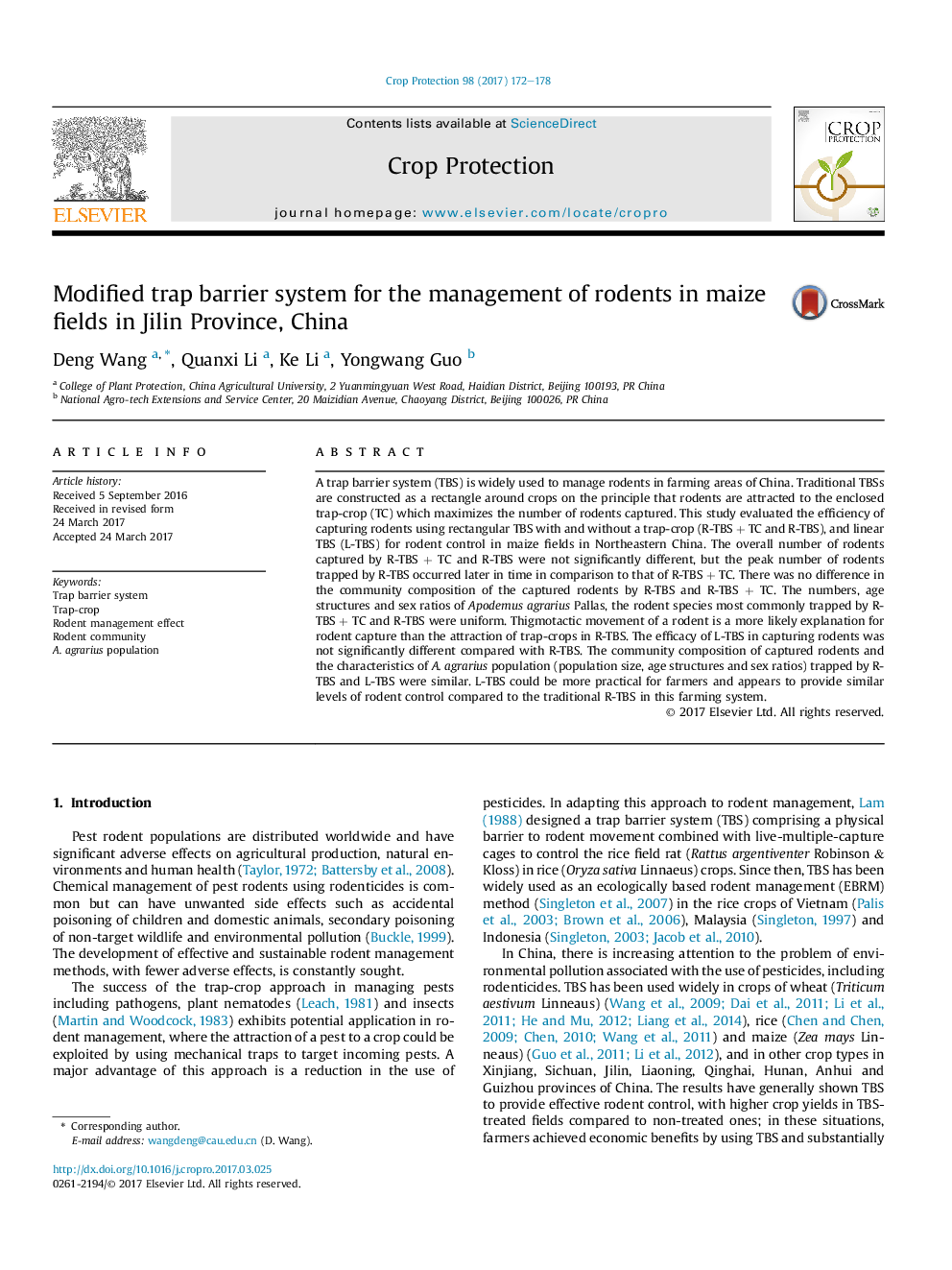| Article ID | Journal | Published Year | Pages | File Type |
|---|---|---|---|---|
| 5760898 | Crop Protection | 2017 | 7 Pages |
Abstract
A trap barrier system (TBS) is widely used to manage rodents in farming areas of China. Traditional TBSs are constructed as a rectangle around crops on the principle that rodents are attracted to the enclosed trap-crop (TC) which maximizes the number of rodents captured. This study evaluated the efficiency of capturing rodents using rectangular TBS with and without a trap-crop (R-TBS + TC and R-TBS), and linear TBS (L-TBS) for rodent control in maize fields in Northeastern China. The overall number of rodents captured by R-TBS + TC and R-TBS were not significantly different, but the peak number of rodents trapped by R-TBS occurred later in time in comparison to that of R-TBS + TC. There was no difference in the community composition of the captured rodents by R-TBS and R-TBS + TC. The numbers, age structures and sex ratios of Apodemus agrarius Pallas, the rodent species most commonly trapped by R-TBS + TC and R-TBS were uniform. Thigmotactic movement of a rodent is a more likely explanation for rodent capture than the attraction of trap-crops in R-TBS. The efficacy of L-TBS in capturing rodents was not significantly different compared with R-TBS. The community composition of captured rodents and the characteristics of A. agrarius population (population size, age structures and sex ratios) trapped by R-TBS and L-TBS were similar. L-TBS could be more practical for farmers and appears to provide similar levels of rodent control compared to the traditional R-TBS in this farming system.
Related Topics
Life Sciences
Agricultural and Biological Sciences
Agronomy and Crop Science
Authors
Deng Wang, Quanxi Li, Ke Li, Yongwang Guo,
